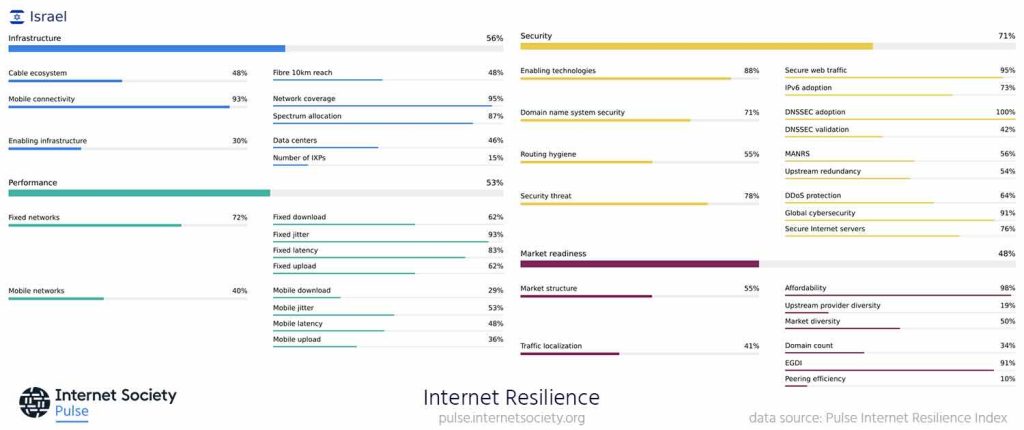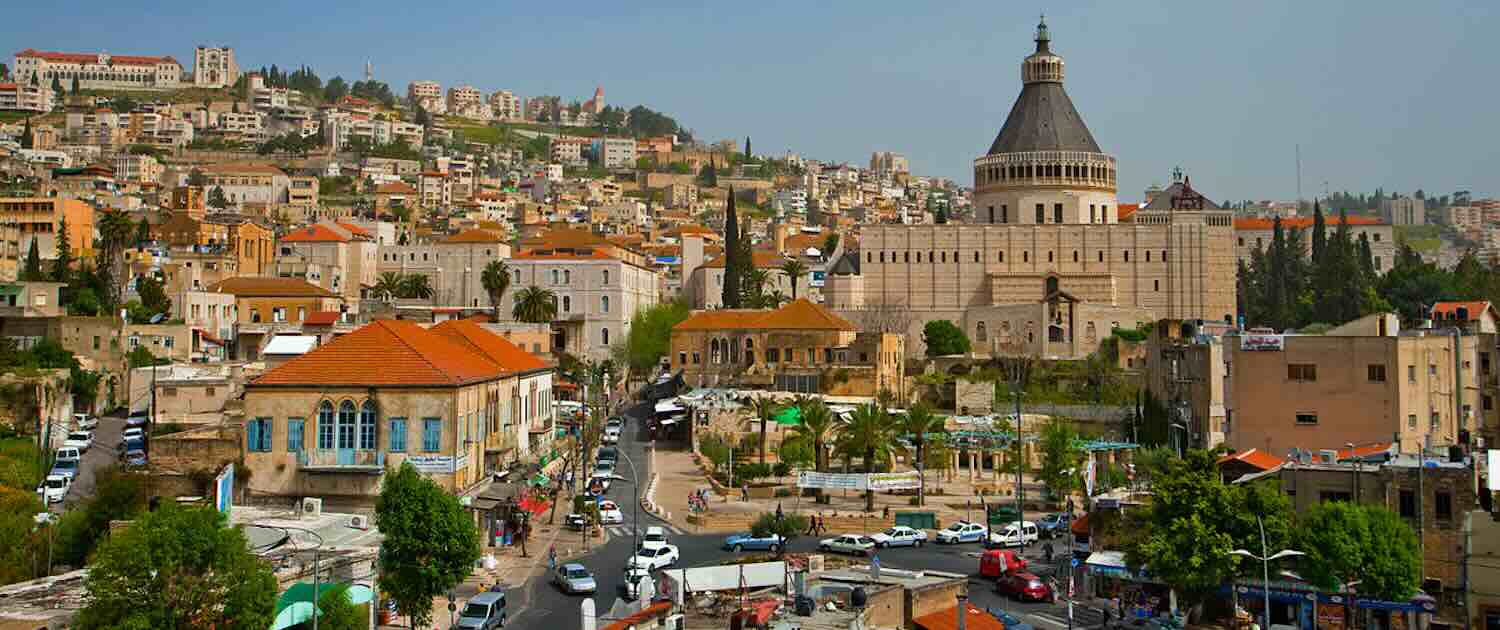- Two recent reports highlight the variances in Israel’s Internet performance and connectivity for Arab (Palestinian) citizens.
- Arab Israeli Internet users most commonly access the Internet via smartphones, laptops, and smart TVs.
- Local studies and Indigenous measurement systems provide greater context on the true resilience of a country’s Internet and allow for more precise data-driven decision-making related to digital development.
Two separate reports released last month by the Israel Internet Association (ISOC-IL) and the Arab Center for the Advancement of Social Media (7amleh) have highlighted a disparity in Internet infrastructure, usage, and online safety within Arab (Palestinian) societies in Israel.
Both reports found that around 25% of Arab populations in Israel rely on mobile phones as their primary means of accessing the Internet. This is attributed to a “severe” lack of fixed digital infrastructure in regions with large Arab populations, such as Negev.
While Israel has a very high Internet penetration rate, these two reports highlight that the types of Internet connectivity vary significantly within the country based on geography and demography, most of which is attributed to ethnicity.
According to the Pulse Internet Resilience Index (IRI), Israel ranks among the top 20 countries with the most resilient Internet worldwide, thanks to its high mobile connectivity, fixed network performance, and affordability.

A limitation of the IRI and other measurements we collate and share on Pulse is that they don’t show these regional and demographic discrepancies.
Both of these recent local studies show that ethnic minorities have less access to the Internet due to income, education levels, occupational differences, and attitudes toward technology.
Such local measurement studies are critical for validating national metrics and understanding where development and policy resources should be focused.
The ISOC-IL study, “Quantifying Inclusion & Online Safety: Insights and Data on Internet Use and Digital Literacy in Arab Society in Israel,” surveyed 714 people from the Arab population in Israel.
Key findings include:
- The rate of cellular connection is significantly higher in the Negev than in all the other geographic regions (42% as opposed to 27% in the Triangle, 20.2% in the Galilee, and 24% in mixed cities).
- 93% of respondents connected to the Internet using a smartphone. 71% own a laptop, 58% have a smart TV, 41% own a tablet, and 27% have a desktop computer.
- Respondents with a high school education or above-average incomes were likelier to own laptops.
- 19% of respondents fell victim to phishing scams, 18% were affected by viruses or experienced attempted account breaches, and 12% suffered from impersonation or identity theft online.
The 7amleh report, “Digital Divide: Discrimination in Digital Infrastructure Against Palestinian Citizens in Israel,” provides a comparative analysis of publicly available information on Internet connectivity between Palestinian communities inside Israel and Jewish citizens.
One comparison shows extensive fiber-optic infrastructure and fixed-broadband usage in areas with low Palestinian populations, such as Nof Hagalil. In contrast, areas with higher Palestinian populations, such as Nazareth, lack entirely such infrastructure and were not even included in tenders by the Israeli Ministry of Communications.
A compounding issue, the report author notes, is that close to 700,000 Palestinians (a third of total Palestinians in Israel) are reliant on one fixed-broadband Internet service provider, Bezeq.
“The Israeli state prides itself on being one of the few OECD countries with universality for internet infrastructure, and the only state where this applies to more than one company,” notes the report authors.
“The universality requirement… [means ISPs have] to provide services nationwide in an equitable manner to every user in the country. They have to build the infrastructure and provide fair and equitable service, including speed and price.”
The report also notes similar differences in mobile phone networks, particularly in Al-Naqab, where some areas “completely lack signal,” and again in Nazareth. “[O]nly a single street separates the [Nazareth and Nof Hagalil]. Despite this, Nazareth is limited to 3G network access, while Nof Hagalil benefits from 5G services,” states the report author.

The Internet Society advocates for everyone to have access to the Internet. Read how we have worked towards connecting the remaining one-third of the world’s population that still lacks access.
The ISOC-IL study was funded by the Internet Society Foundation Beyond the Net Program. The program aims to strengthen the impact of the Internet Society and the Internet Society Foundation’s mission and global initiatives with complementary local activities and develop new and strengthen existing relationships and partnerships at the local level.
Photo by Israel_photo_gallery via Wikimedia Commons


